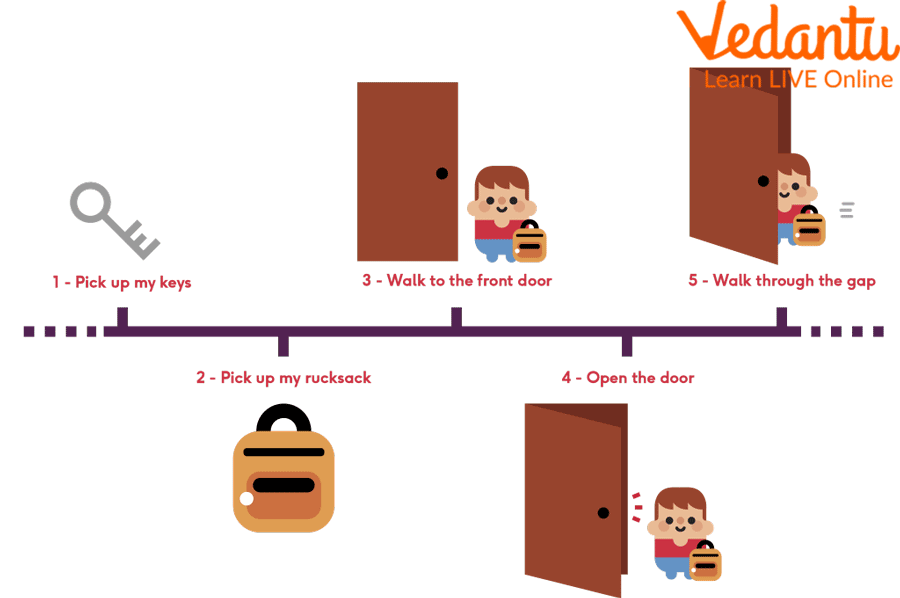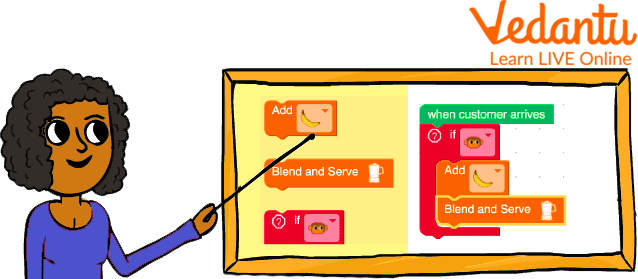What is Algorithm in Computers?
Algorithms can be found everywhere if you conceive of them in the broadest sense possible (and not simply in terms of computing). Algorithms include the process of folding a shirt or pair of pants, the way you solve addition or long division problems, and recipes for food preparation.
In this article, we'll look at algorithms, learn how to make them, and discuss how they're used in practical situations. Moreover, we are going to find out about the use of algorithms in everyday life and how a child can learn algorithms for kids and use it with ease.
What is an Algorithm?
An algorithm is a detailed step-by-step instruction set or formula for solving a problem or completing a task. Programmers create algorithms that tell computers how to carry out specific tasks.
Algorithm in Coding
Algorithms are blocks or functions of code that can be used to solve mathematical or computer issues. You can write them in any language. A piece of code must consistently produce the correct answer and be ensured to function with suitable inputs in order to qualify as an algorithm. Coding algorithms can be straightforward processes that can find information or sort lists.
Coding algorithms are particularly helpful because they are far faster than humans at solving complex issues. In reality, algorithms can be used to address some issues that are too complex to be solved mathematically.
Examples of Algorithm
To enable a clear understanding for the kids, examples of algorithms from daily life can be introduced in the following ways.
Baking a Cake
A cake can be made by gathering ingredients, preheating the oven, combining wet and dry components, filling a cake pan, and baking the cake till it is finished. This kind of algorithm may be described in a cookbook or recipe website.
Tying of Shoelaces
You probably don't even consider the steps when you tie your shoelaces because the algorithm is so automatic. Since they can be broken down into steps that you repeat each time you need to complete the activity, many routines or habits are algorithms.
Driving a Car
The majority of the things we do while driving can be viewed as algorithms. There are a series of precise processes required for passing through a four-way stop, changing lanes, and even parking, thereby making these actions algorithmic.

Algorithm in Daily Life
Use of Algorithms in Computers
The building blocks of programming are algorithms. Learning about the creation and study of algorithms thus forms a significant portion of computer programming. Algorithms today enable the operation and decision-making of computers, smartphones, and websites. If you use applications like Facebook and TikTok, for instance, the algorithms on those sites help select the material that is shown to you.
Algorithm for Kids
There are many learning resources online dedicated to computer science all having a lots of additional materials for teaching children about algorithms. Sometimes the simplest explanations work best, such as the steps needed to open a Pepsi can. You must investigate the activities to determine which ones are best for you and your class.

Algorithm for Kids
Encouraging the Child About Algorithm
Encourage your kid to write down their morning routine or the algorithm for something even easier, like eating cereal or brushing their teeth. They will be studying crucial computational ideas like repetition (brush bottom left tooth five times), sequencing (place food in the bowl and then add milk), and conditional logic without even realising it (if the bowl is empty, stop eating).
Encourage your youngster to be as detailed as possible when giving directions. Your milk will spill all over the floor if you don't tell the computer you have to remove the bowl first.
Summary
Algorithms are everywhere, from programming and computer science to driving your car, tying a tie, and doing your taxes. Algorithms can be as simple or as complicated as needed, providing a universal tool for solving problems and completing tasks. In the given article we have discussed the meaning of the term algorithm. We have studied the role of algorithms in computer sciences and how a small kid can also write an algorithm. So students can use algorithms in their daily life and even they can write an algorithm.


FAQs on Algorithm for Kids
1. What do you mean by the algorithm and its use in computers?
Algorithms are detailed step-by-step instructions or formulas for solving problems or completing tasks. Computers are programmed to execute specific tasks using algorithms that are developed by programmers.
Computers, smartphones, and websites operate and make decisions based on algorithms today. Algorithms are used on social media platforms like Facebook and TikTok to select the content that appears on the site.
2. Why should kids learn algorithms?
As kids grow up, they will be exposed to algorithms in everyday life, whether it is on their phones or social media. Learning algorithms at an early age will help them understand the concept from a young age and it will not be something that they need to learn as adults. It will also help them understand programming concepts more easily later in life.
3. Can a small kid write an algorithm? If yes, how?
Yes, a small kid can write an algorithm too like the adults who study computer sciences. You can get them started by writing down their morning routine or an algorithm for something easier, like eating cereal or brushing their teeth. It will enable them to learn computational concepts like repetition (brush the bottom left tooth five times), sequencing (place food in the bowl and then add milk), and conditional logic (if you fill-up the bowl, stop eating).
4. What is algorithmic thinking for kids?
Algorithmic thinking is a term used in Artificial Intelligence and Computer Science. It can be defined as the basic set of steps that we need to follow to solve a problem. These are used in a sequential manner through logical steps. The development of algorithms starts even when we are very young and is used in our daily lives such as driving a car.
5. What is the difference between an algorithm and a program?
An algorithm is a set of instructions that can be followed to solve a problem. A program is a code used to tell the computer what these steps are so that they can be executed by the computer.




